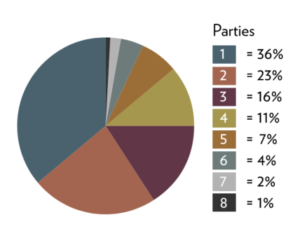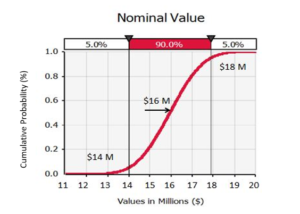Responsibility and Cleanup Allocation

When it comes to Comprehensive Environmental Response, Compensation, and Liability (CERCLA) claims such as insurance cost recovery, firms rely on environmental experts to provide effective environmental liability assessment and technical support. Additionally, support teams often assist with cost recovery efforts, including deterministic and probabilistic cost estimating and cost allocation. These efforts involve preparing site history timelines often reflecting several decades of successive owner and operator contributions to the impacts observed, including emerging contaminants.
By strategizing with legal counsel throughout each case and producing and/or reviewing pertinent documents, Langan’s experts are able to offer mediation support, prepare expert witness reports and trial exhibits, and provide testimony. Langan’s environmental professionals support our experts with a broad array of technical capabilities, including database management and visualization, human health and ecological risk assessment, and groundwater modeling to evaluate site conditions and potential liabilities.
For CERCLA cases, remedial action selection and implementation is evaluated against the National Contingency Plan (NCP) criteria. The NCP is the federal roadmap (also adopted by most states) for response actions approved by regulatory agencies and the public, and substantial compliance with the NCP is considered necessary by state and federal courts. Evaluation of NCP consistency includes many considerations regarding the response process, such as public awareness and participation, remediation effectiveness and cost, and regulatory compliance and approvals.
When handling cost allocation, you must first acknowledge that every site is unique – its history of ownership and use, subsurface conditions, degree of risk it poses to human health and the environment, and many other factors. Complex sites often introduce unique challenges that complicate this task, ranging from contaminants impacting several media to multiple parties – e.g., property owners, tenants, facility operators, waste generators, and waste transporters – that may exhibit varying degrees of involvement with contaminant releases influencing the cost recovery process.
Regardless of the challenges faced, an effective cost allocation methodology developed for each site is designed to be reasonable, equitable, technically defensible using consistent judgment, and without bias. Typically, the results of the cost allocation serve as the basis for an agreement between all parties involved.

Throughout this process, Langan helps clients and legal counsel assess and devise negotiation and litigation strategies including a risk analysis approach. This approach provides a powerful framework for a methodical and quantitative assessment of uncertainties in site conditions, the anticipated duration of remediation, and the potential range of costs. Using deterministic and probabilistic cost estimates, performance assessments, and decision analyses, Langan assists clients in resolving cases with multiple potentially responsible parties and negotiating with regulatory agencies.

